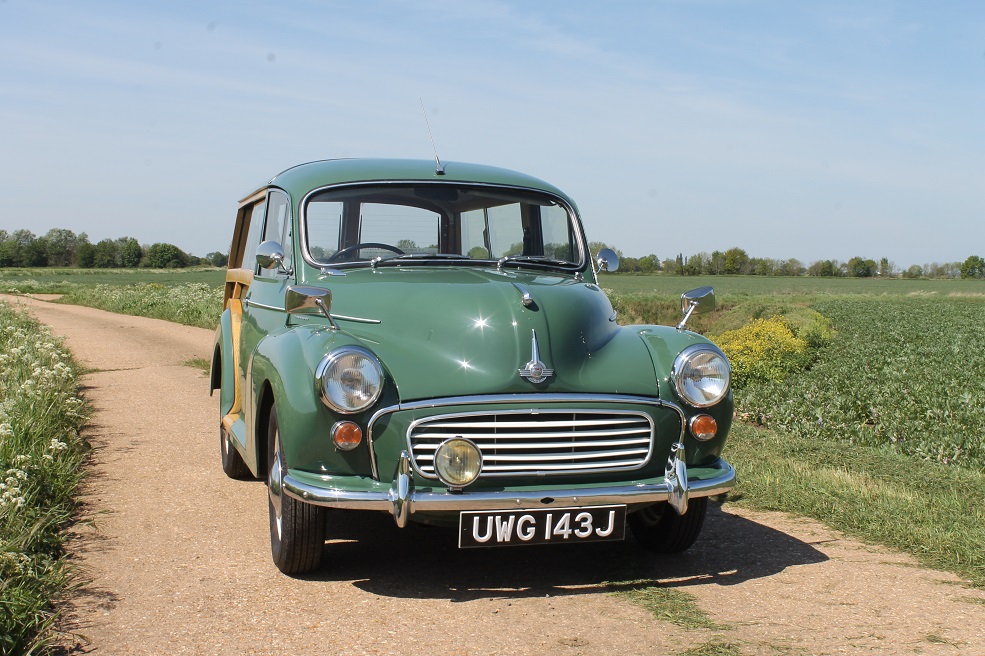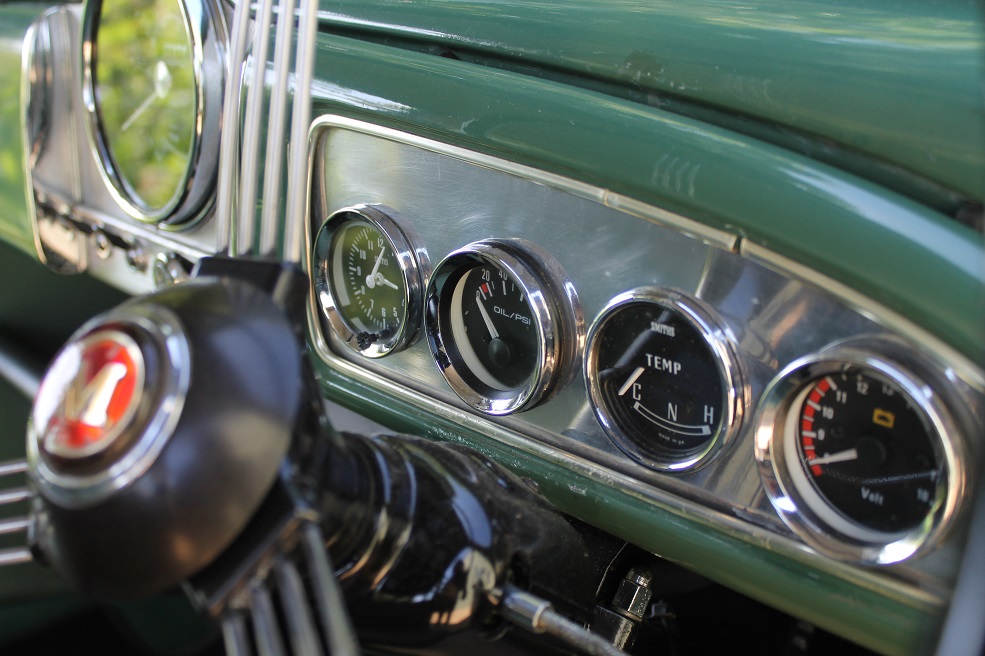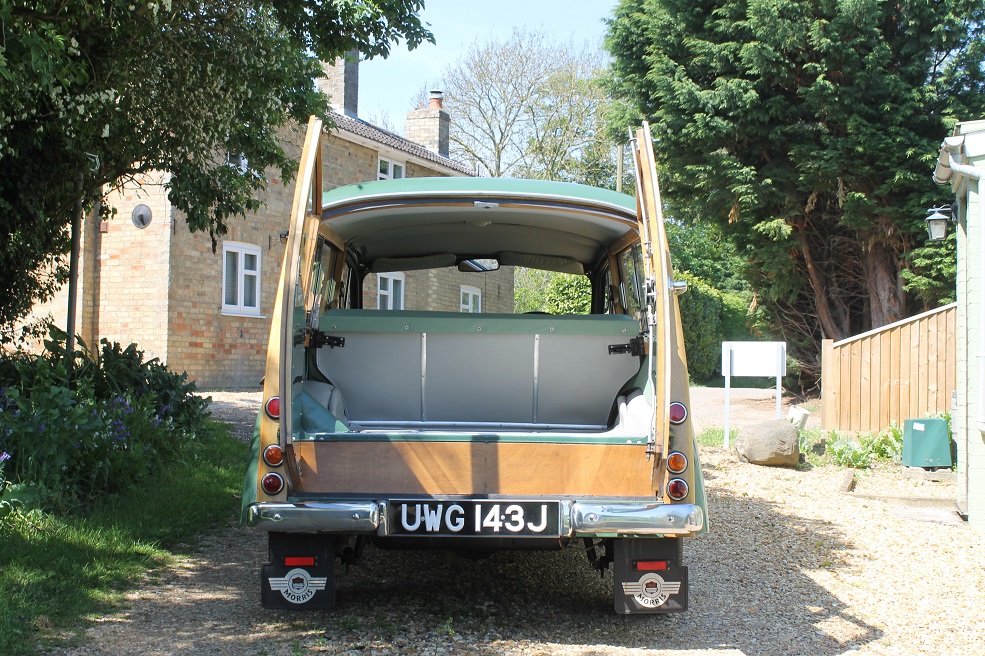When it comes to an easy to own and hugely practical ‘woodie’ estate, if you avoid the rot, can you really beat a Morris Traveller? Here’s what you need to know before buying one.
In the 1930s, influenced by the fashion for wood-framed estates across the pond, a fair few car manufacturers here started using timber. Soon after WW2 the trend was fuelled by a shortage of steel, but as the cost of cutting, forming, gluing and adding a finish to wood started worrying the bean counters, the ‘wood’ aspect became just an effect.
The Morris Traveller, of course, was different; the wood needed to be there. The ash frame behind the front doors is to hold its aluminium body panels in place and provide structural integrity. That’s the technical explanation, but more than that, those distinctive timber sections add charm, as do the split barn doors and sliding side windows for rear passengers – and that’s why this very British woodie has always enjoyed a strong and enthusiastic following.
The first Morris Traveller appeared in 1953, following the merger of Austin and Morris the previous year. A result of this new conglomerate was the Series 2 Minor with its overhead valve Austin A-Series engine which at launch the new Morris estate naturally benefitted from. That said, while the 803cc engine offered better acceleration and a higher top speed, low gearing and widely spaced ratios continued to blunt performance and in reality these models still begin to run out of puff when the speedo needle edges beyond 50mph.

A BMC A-type rear axle and rubber-bushed steering arm were added from 1954 as was a bigger grille, better seats and an improved dashboard with the now distinctive central speedo.
The definitive Morris Traveller arrived in 1956, fitted with the larger 948cc A-Series engine as well as a larger curved windscreen and tweaks to the interior. Taller gearing made the magic 70mph attainable at last, while a remote change gearshift also made life easier.
Meanwhile, wider opening doors made access better from 1959 but more importantly, a larger 48bhp 1098cc engine was fitted from 1961, pushing top speed to a heady 80mph.
A stronger gearbox from 1962 was also a step in the right direction as far as driveability was concerned, despite the fact that there was still no synchro on first, as was the addition of bigger drum brakes. Sadly, however, there was still no servo.

In 1963 larger indicators were fitted along with an improved wiper system which meant that there was no longer a substantial unwiped area of the windscreen when it rained.
And that’s about it when it comes to Traveller landmarks. Indeed, Morris’s ‘woodie’ remained unchanged throughout production and outlasted the saloon models by a year with the final Morris Traveller trundling off the production line in 1971. It even gained the luxury of a steering lock in the final year of production.
The Traveller’s aged well. Moreover, thanks to excellent club and specialist support, and an abundance of spare parts, the survival rate is good. This bodes well for anyone in the market to buy one as there’s usually a few for sale so there’s no pressure to buy the first one you see. However, you do need to be careful if buying a project because of the wood. Yes, the thing that made the Traveller stand out from the crowd is also the aspect that can trip you up most.

Body and chassis
Original ‘survivor’ Travellers do exist, but in reality the vast majority will have had restoration work carried out – so question what’s been done, by whom, and how well it’s all been executed. Be mindful of the fact that many have undergone years of poorly executed repairs and making good a car that’s like a patchwork quilt underneath can be an expensive and frustrating experience.
Due to the Minor’s complex unitary construction once rot has set in it can spread almost anywhere. Worst hit areas include the chassis rails, sills and the front cross member which supports the rear ends of the torsion bars and jacking points. When that goes, you will usually need to repair the floorpan as well around the edges. Patch repairs are okay as long as they’ve been welded to solid metal, although for the rear spring hangers getting a specialist to replace the whole section (£200 per side) is a better solution.
Cosmetically, you are looking for rust around the headlamps, the rear edge of the front wings and the door bottoms.
The outer panels bolt on, but despite second-hand wings costing as little as £35, replacing them won’t be as straightforward as you might think because once you get them off often you’ll find the inner wing’s rotten, so there’s nowhere to bolt the new wing back on to.

It goes without saying that Travellers present a different set of problems if the seasoned ash frame is rotten, so inspect for filler and darkening of the timber which is an early tell-tale sign that water has already found its way in. Localised repairs, namely cutting out the soggy wood and replacing it with fresh timber is entirely possible, though not easy. The best case scenario, if the wood looks a bit sketchy but isn’t rotten, is if you are able to remove the old varnish and treat the timber underneath to improve longevity. Common treatments include clear Cuprinol followed by a top coat of Danish or Teak oil. Alternatively, a Sikkens treatment will add colour and prove even more durable.
A Traveller Timber Kit, which includes everything you need to replace the wood structure at the back is £1500 from Charles Ware’s and while it’s possible to do it yourself, it’s a pretty invasive process. You’ll need to swap over the window channels, support the roof, seal it and no doubt do a bit of finessing because no two cars were the same. If you pay a specialist it will be £2500. In short, if the wood’s had it, you’ve got an important decision to make.

Engine and gearbox
Those A-Series engines in the Morris Traveller are robust though they can feel harsh when put under load and get noisy when worn, usually due to worn timing chains.
Head gasket issues, evident by the presence of a ‘mayo’ like substance when you lift the oil filler cap and traces of oil/water contamination, can also spoil things. The gasket usually lets go at the back of the engine between cylinders three and four. Meanwhile blue smoke on start up will point to excessive bore wear. Rebuilds are possible, but if it turns out the engine’s just too worn, then reconditioned replacements will set you back around £1500 supplied and fitted.
Oil leaks are to be expected to an extent, the most common source being from the rear crankshaft seal. Unfortunately, it’s an encapsulated metal item, not a conventional bush, and curing the leak is not easy, so be prepared to live with it.
Gearboxes on later 1098cc Minors are more rugged, although worn synchromesh can be a problem with all cars as can the box suddenly jumping out of gear. A recon unit will be in the region of £600. A juddery clutch can usually be blamed on a worn or broken steady bar or a slack steady cable between the gearbox and crossmember… something that can usually be fixed without too much fuss.

Steering and suspension
Regular lubrication of the suspension is essential, so if there’s insufficient evidence to suggest it has been carried out at regular intervals then you might get some big bills down the road.
Specifically, wayward steering on a test drive could be down to worn trunnions, so jack up the front end and investigate if possible – the left-hand side will usually wear first. If there’s excessive wobble top and bottom, then be sure to haggle accordingly because renewing the trunnion and upright will be around £100 each side. In the worst cases the front suspension can collapse completely if the trunnion comes away from the upright – the join is courtesy of a screw thread which requires greasing every 2000 miles and if this is ignored, the thread can wear and both parts can eventually separate.
Minors that sit too low are likely to be suffering sagging lever arm dampers and rear leaf springs. The lever arms are a little over £20 each, while replacing sagging leaf springs with all the necessary pins and bushes will be a tad under £300 for both sides with parts and labour.
Axle whine is par for the course but because finding replacement crown wheel and pinions is tricky – again it’s likely to be a case of living with it and putting it down to being all part of the car’s charm.
The Minor is renowned for being fun to drive, but the experience can be ruined by play in the rack and pinion steering. Often it’s the rack mounts or steering linkage that need attention – or it could be the rack itself. While underneath it’s worth checking the condition of the rubber gaiters because once these have let go, dirt can enter the rack and quickly ruin it. Also, make sure it’s got enough oil – it takes around half a pint of hypoid 90 oil (not grease).

Brakes
The stock Minor brakes are adequate, but if the Traveller you are viewing has had a front disc conversion, see it as a positive as it’s one of the most popular Minor upgrades. Ditto a servo, as kits are the best part of £500.
Wheel cylinders can seize and this is particularly relevant on cars that have been left sitting around, so beware potential purchases that pull badly to one side when stamping on the anchors. Replacement wheel cylinders aren’t expensive at under a tenner for the fronts and about double this for the rears. Neither are sundries such as drums and shoes – an axle set of brake shoes start at as little as £16.

Trim and electrics
Later Minors are undoubtedly more robust inside, but all vehicles can display signs of wear and aging so bear this in mind when buying. The good news though is that virtually anything and everything is available so it’s unlikely to prove a problem.
Obviously if you like a car’s interior to have an original ‘patina’, don’t pay over the odds for one that’s been totally retrimmed.
Electrics are simple and generally easy to fix if there’s an issue; an alternator conversion is a plus if fitted, especially if you want to use your Morris Traveller all year round.

Values
Being more abundant, £5000 will be ample for an up and running Moggie saloon. However, you’ll need to budget on spending an extra £2000 for a reasonably tidy Traveller. The most recently restored examples with nicely presented interiors and a fresh coat of treatment on the wood frame might be between £12,000-£15,000.
Basket case Travellers can still be found, usually when someone’s dug a little deeper and realised they’ve bitten off more than they can chew. They are usually advertised at between £2000-£3000. This means you can grab a cheap and rewarding project if you are able to jump in where they left off. That said, tot up the price of the new wood frame and see if it really makes sense. Oh, and make sure it’s all there; despite what we’ve said about everything being available, if you end up having to buy lots of missing bits of the jigsaw it can soon blow your budget.
Verdict
If you have owned a Morris Traveller, chances are you will have enjoyed the experience. It’s always been a popular classic and if you go back a couple of decades it was still a common sight on our roads, conscientiously going about its duties on the daily commute, school run or shopping trip. With its old fashioned, rounded front wings and distinctive wooden back end it’s an archetypal old car – but here’s the thing. With its opening rear doors, it’s practical too. Of course the real beauty with the Traveller, besides its decent handling and cheap running costs, is the fact that it’s just so easy to keep and maintain yourself. And frankly, what more could you ask from a model that’s getting on for 70 years old!








